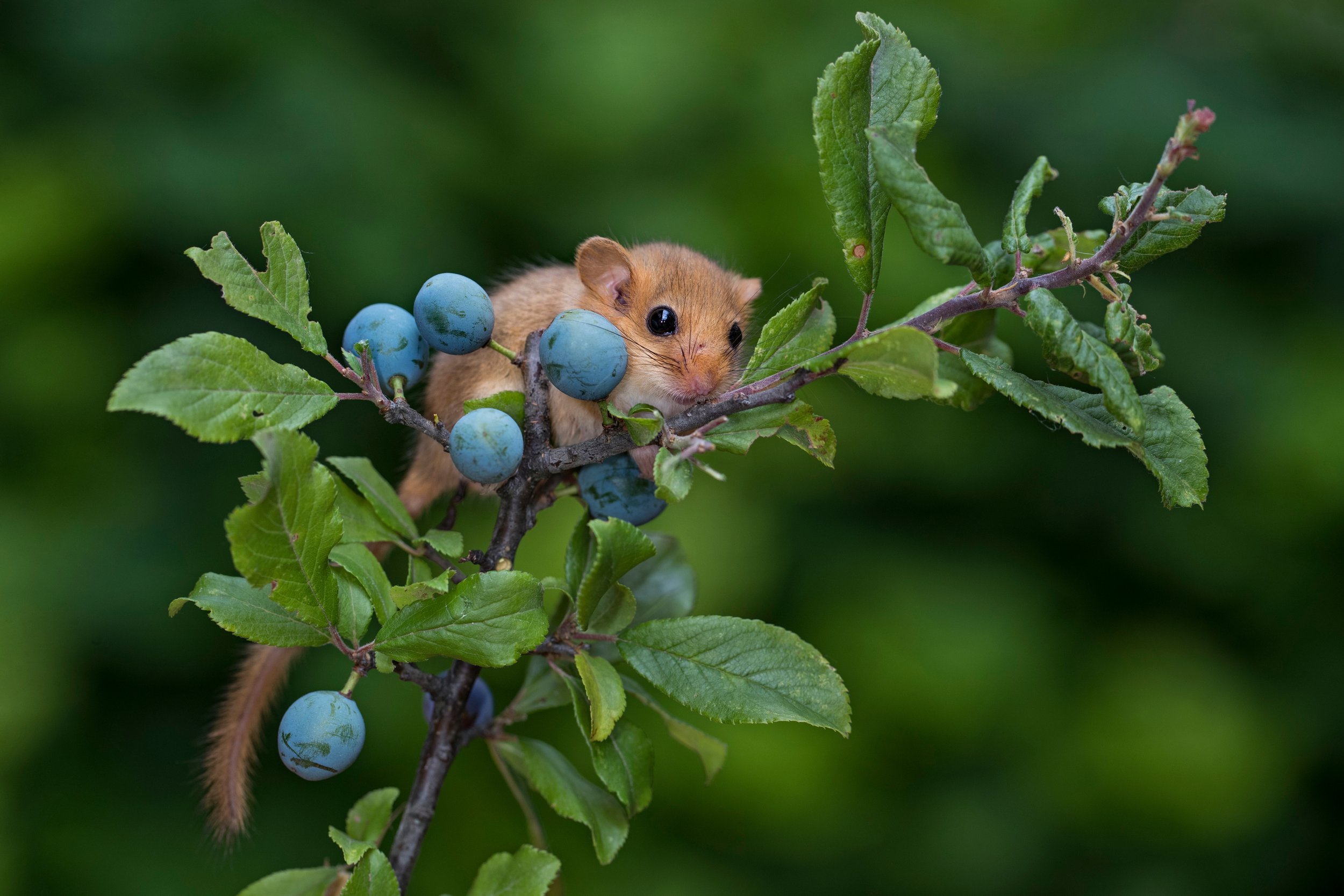Dormice Over Winter
What are Hazel Dormice?
Hazel dormice Muscardinus avellanarius are an endearing rodent that are part of the family Gliridae.
They are between 6 to 9cm in length, with golden/caramel fur and a fluffy tail which they use to help them climb trees. They are arboreal and live in deciduous woodlands, scrub, hedgerows and even conifer plantations.
Dormice are an elusive species that are nocturnal and only present in certain areas of the UK (mostly in the southern counties). Unfortunately, a report published by People's Trust for Endangered Species (PTES) in November 2023 revealed that Britain’s dormouse populations have declined by up to 70% since 2000 and there are calls for dormice to be moved from ‘Vulnerable’ to ‘Endangered’ on the International Union for Conservation of Nature (IUCN) Red List.
Their name is derived from the French word ‘Dormir’ which means ‘to sleep’, and dormice do in fact spend a large portion of their year (up to seven months) either in torpor or hibernation. Dormice can sometimes even be heard snoring during surveys!
Hibernation
Hibernation is not really ‘sleep’, as during hibernation dormice slow their breathing and heart rate considerably and their body temperature drops in order to conserve energy. They hibernate between October and May, though this varies depending on local climate. In the build-up to hibernation they need to increase their fat reserves and weight (up to 40g), which they achieve through eating berries, nuts and seeds.
Though they are arboreal, dormice need to hibernate in constant temperatures and humidity, and these remain more constant on the ground. They therefore move to the ground, within their active range (often under the shelter of coppice stools or logs) and build a nest the size of a cricket ball that is tightly-woven with a small cavity. They then curl up inside this cavity to conserve heat. Being at ground level seems risky, but evidence shows they are not more vulnerable to predators.
In the spring, as temperatures rise, they will wake more frequently, and are often fully awake by late April or early-May. When they wake fully, they may have lost up to half of their weight and so will need to forage for flowers, buds or small insects to regain weight before breeding successfully over summer.
There is relatively little knowledge about their hibernation habits, but the more information we can glean, the quicker we can work towards conserving this species.
Torpor
Torpor is not the same as hibernation! Outside of the winter months, during periods of cold/wet weather or when there is food scarcity dormice go into torpor which is a state of deep sleep that also helps them to conserve energy until the weather or food availability improves. It is a type of temporary hibernation and is for much shorter periods of time.

